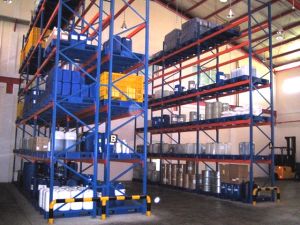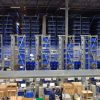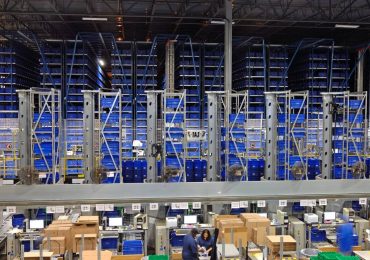Warehouses are an essential part of the UK’s economy both in terms of bringing jobs and money to the Country. Having personally spent many years working in all manner of warehouses I have acquired a fairy good understanding of the types of material handling equipment you will find in most warehouses and what the uses of each piece of equipment are.
Warehouse work is known for being tedious and hard wearing, however, without some of the equipment described below it would be intolerable, impractical and most likely not possible.
Hand Pallet Trucks
This is the most popular piece of warehousing equipment throughout the world and is known by a number of names, these include: pedestrian pallet trucks, pump trucks, pump jacks and stacking truck.
Pallet trucks consist of two forks, an operating handle and a built in hydraulic system that makes the lifting and relocation of pallets a very easy task. They are operated by pushing the forks into the lifting locations on a pallet and then ‘pumping’ the handle up and down to raise the pallet up on the forks. Once raised the pallet can be moved around and released in a new location by pulling in the handle on the operating handle to lower the pallet.
The popularity of this piece of equipment is due to hand pallet trucks being both highly efficient and low in cost. They can be picked up from just £136 and will facilitate the movement of palletised loads. They can also be purchased online from a number of warehouse equipment retailers such as Pallet Trucks UK and Toyota.
The capacities and sizes of these trucks differ depending on the type and you can get trucks that can lift anything from an empty pallet to a pallet weighing over 2.5 tonnes (2500 KG).
Of course the ability to move palletised loads is vitally important in a warehouse and giving warehouse operatives the correct equipment will not only increase efficiency but will also reduce injuries that could be caused by moving heavy loads manually.
Stackers
Stackers are another popular piece of warehouse equipment. As you might guess from the name, they are used for stacking pallets and due to the extra height capacity that is needed for this task, the weight capacity is usually between 1000KG and 1500KG.
These trucks essentially work the same as pallet trucks, however, the stackers require extra balance due to the task of lifting heavy pallets over 1 metre into the air, to give this extra balance stacker trucks have two supporting straddle legs that go either side of the load. These straddle legs have lead to stackers also being known as “straddle stackers” because of the way they straddle the load with one leg either side.
Also available are stackers that feature a rotation facility that can be useful in some unique warehouse situations.
Lift Tables
Lift tables are not as common as pallet trucks or pallet stackers, however, they are an excellent manual handling aid for raising components in a warehouse up to working height. Another fantastic thing about lift tables is that often manufacturers can tailor lift tables to your needs depending what you will be required to lift.
Again they operate in much the same way that a pallet truck does, by pumping the handle, but a scissor lifting mechanism is used to lift the table into the air rather than a hydraulic mechanism lifting from the rear.
Electric Versions
All of the above equipment types are available in electric versions too. The electric versions have higher lifting capacities and require less input from the operator, however, require more training than the manual versions. They do of course require charging and this will result in more downtime than regular models.
About the Author :
This article was written for us by David Trent, a material handling and warehouse specialist based in the UK.







